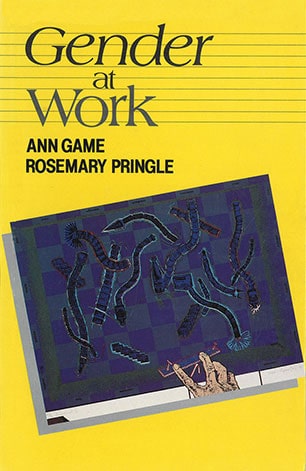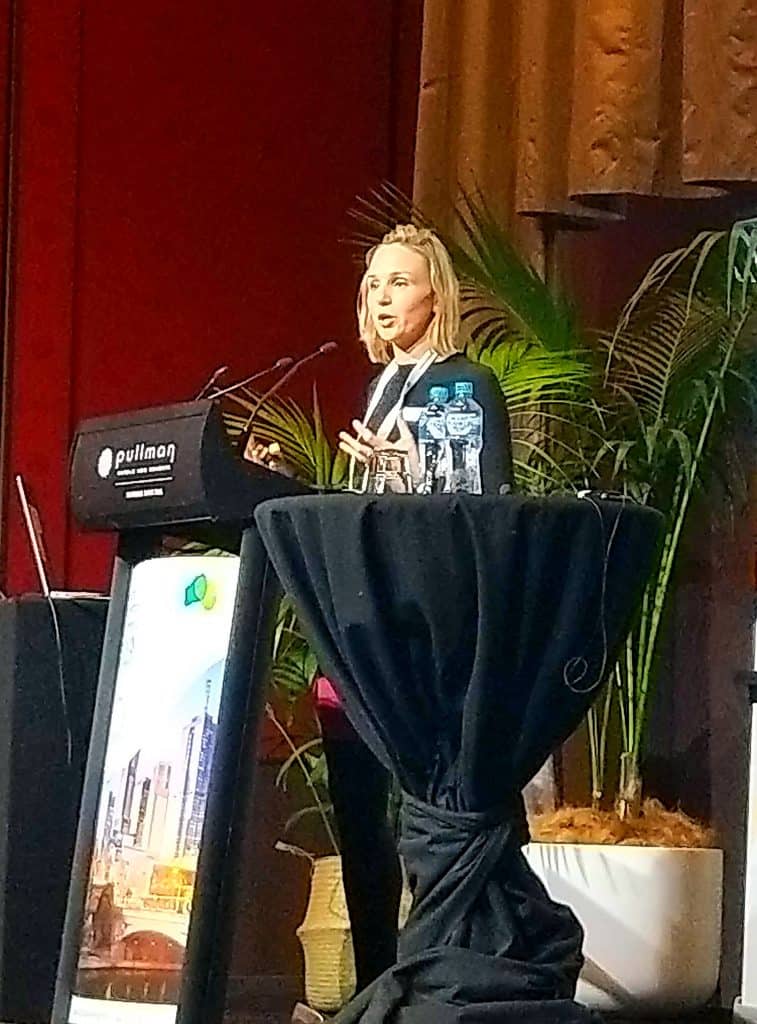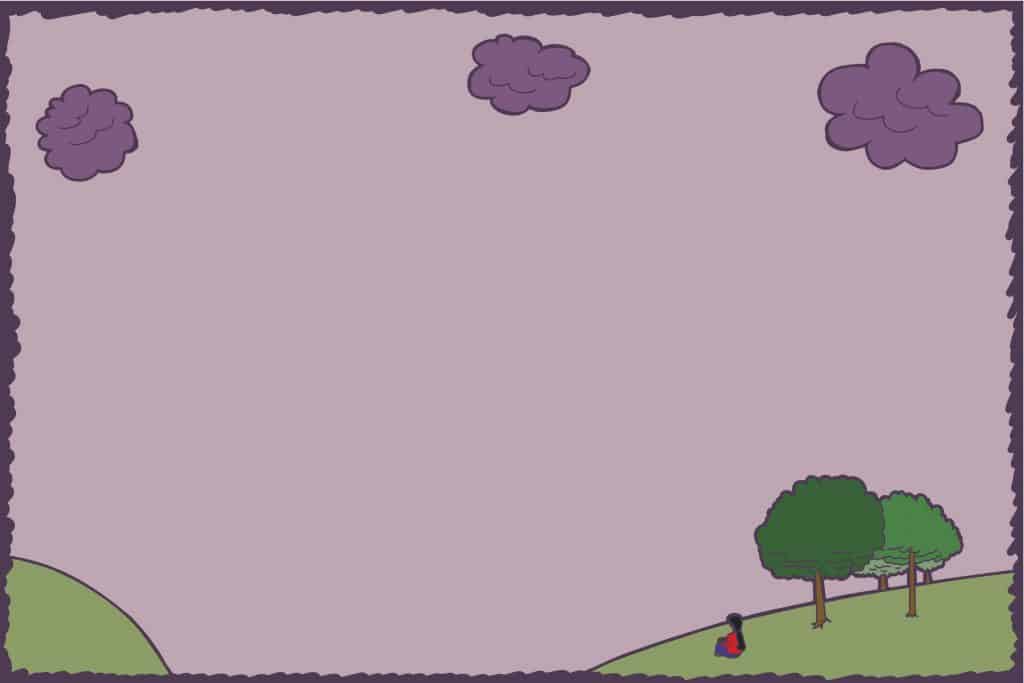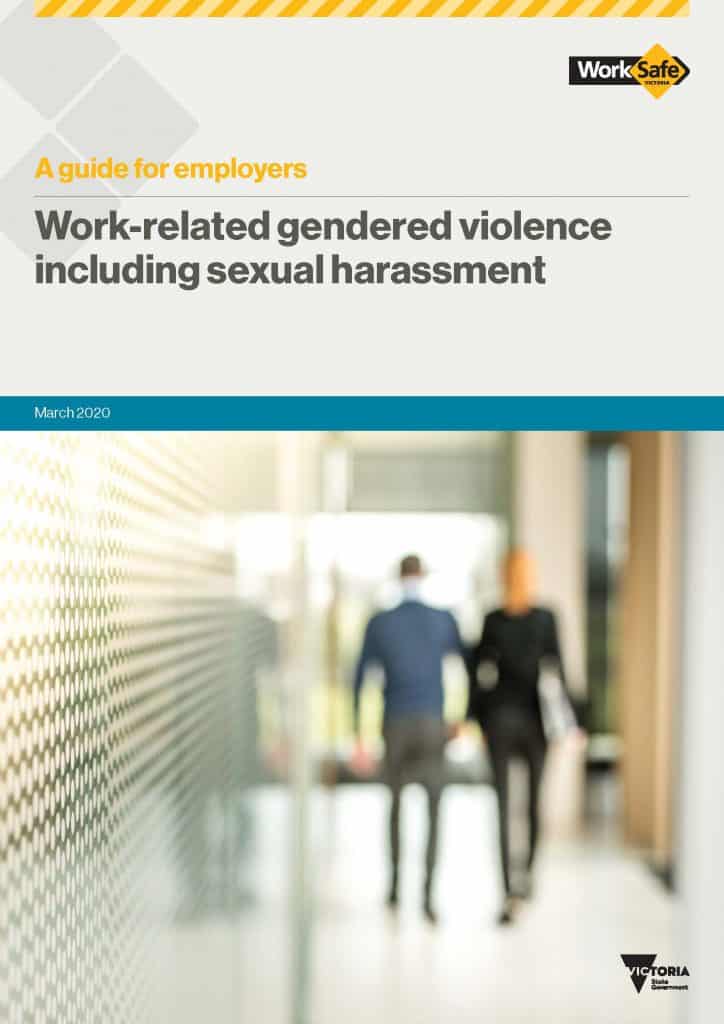On October 7 2016, Victoria’s trade union movement held a Young Worker Conference. The major public statement from that conference was the launch of a survey report called Young Workers Health and Safety Snapshot. The report has received some mainstream press which is not unusual for this type of trade union member survey. Almost twenty years ago a similar type of survey from the Australian Council of Trade Unions (ACTU) launched the issue of workplace bullying into the Australian consciousness.
 The media article mentioned above focussed on the sexual harassment elements of the survey report which is unsurprising as sexual harassment cases have been a mainstay of workplace relations reporting but it overpowered some of the other more recognisable occupational health and safety (OHS) issues.
The media article mentioned above focussed on the sexual harassment elements of the survey report which is unsurprising as sexual harassment cases have been a mainstay of workplace relations reporting but it overpowered some of the other more recognisable occupational health and safety (OHS) issues.
The recent Victorian report found that:
“Young people are beginning their working lives without the education needed to identify workplace bullying and health & safety hazards and their employers’ obligations to address them. Young people are not being equipped with the tools to confidently question unsafe practices in the workplace and confidently raise issue when needed. This has led to a normalisation of unsafe work practices as the status quo.”
Where is a young worker to receive such information? The school curriculum is already bursting with subjects and there is constant pressure for more. As has been written elsewhere in this blog, school-based bullying is significantly different from workplace bullying due to the very different power relationships between a student and their teacher and a worker and their employer different laws, different rules, different environment, different culture…
Students may receive some exposure to work through a placement or “work experience” but whether that person undertakes a full set of safety inductions is unlikely. The process is usually one of supervision and workplace exposure. In such situations which, formally, only last five working days students may witness workplace bullying but their attention is on work tasks more than on the complex relationships that underpin work.
Employers have the responsibility for providing a safe and healthy work environment. What is not overtly stated in safety legislation is that this obligation is to every worker from their first day to the last. The employer and their managerial system is the principal source of OHS information for young workers. If the worker is in a unionised workplace, their health and safety representative is likely to play a role in this induction process but that is an increasingly rare situation in Australia.
The body of the Young Worker report offers a different take on the prevalence of workplace bullying. It asked
“Have you experienced bullying or harassment from any of the following?”
The categories were Customer/Client, Boss/Supervisor, Co-Worker, None of the above, or I’d rather not say.
Thirty-nine percent said none of the categories listed. Does this indicate that bullying is less of an issues than is often made out? And are workers really getting bullied by clients or are they being harassed? It is sloppy research to combine harassment and bullying in survey questions as bullying and harassment are two different interactions although the mental health impacts on workers may be similar.
This overlap of harassment and bullying continues to complicate OHS interventions, has existed for some time and is continuing to be ignored. (This blog wrote about the issue in 2011) Safe Work Australia (SWA) defines workplace bullying as
“Workplace bullying is repeated and unreasonable behaviour directed towards a worker or a group of workers that creates a risk to health and safety.”
It is difficult to see that this definition applies to the relationships between workers and customers due to the requirement for repetition however it may be possible. More likely the client/worker relationship may involve harassment but clarity on how workplace harassment is determined is more difficult. Sexual harassment is discussed in the SWA guide:
“The type of behaviour occurring may need to be determined to develop an appropriate response. For example, if the behaviour involves physical violence or what appears to be unlawful discrimination or sexual harassment, whether it is repeated or not, it will require a different response to workplace bullying.” (page 17)
Given that the issue of “incivility” has been gaining ground as a workplace psychosocial hazard, it may be a useful to consider this in client/worker relationships. However harassment at work may involve stalking and cyberbullying. This mess of potential workplace hazards makes it even more important for surveys like the one conducted with young workers to be very clear on what is being asked so that the responses address the intent of the question. The survey question above on workplace bullying is unhelpful.
Incident Reporting
Another of the findings is
“Health & safety issues and workplace injury or illness are underreported. 1 in 3 young people who sustained workplace injuries or illnesses did not report them to their boss or supervisor. When asked to perform an unsafe task more than half will do it rather than raise it with their boss or supervisor. Young people reported fear of retaliation – such as losing their shifts or not having their contracts renewed – and fear that health & safety issues or workplace injuries or illnesses would not be taken seriously by their employer. Taking action to report an incident is seen as an extraordinary course of action, rather than the commonplace response to hazards.”
Underreporting of injuries is a perennial problems at all levels of any workplace. If you report an injury, you are seen as careless, unthinking and/or untrustworthy and a failure. You feel like you made a mistake and that it is your fault. Maybe it is and maybe it isn’t but that should not be a relevant consideration in most OHS circumstances. The negative shameful feelings are most likely to appear in an organisation that does not understand their workers and their work practices. The managerial focus is likely to be on production outcomes, or deadlines, rather than on the quality of the work or the safety of their workers. Yet it is the managers and employers who are in charge of managing those deadlines and resourcing the production process.
It may sound naive but a production urgency in any work process is indicative of poor planning and poor preparation. Such a situation increases a range of business risks, including the encouragement the sacrifice usual safety practices. Workers should take responsibility for their actions but that is different from accepting the blame.
Some companies have instigated alternative incident reporting measures where an anonymous report can be sent to a senior supervisor if the incident report is discouraged, or not attended to, at the level of line managers and supervisors. Such systems are well-intentioned but only operate in industries or companies where there is a level of organisational maturity that can guarantee no repercussions on the reporter. This situation remains rare.
Incident reports are an important element of OHS but they are seen more as generators of unnecessary work instead of an opportunity to improve. This fear of being seen as a failure is a powerful emotion with which OHS needs to contend.
Refusing unsafe work
The report shows that almost 56% of young workers asked to perform unsafe work did so and that the remainder raised their safety concerns with a supervisor. The report gives emphasis to the first of the statistics but the statistics can be read positively as the number of workers raising concerns is considerably higher than one would expect. It would wonderful if this level of safety awareness was representative of the whole young workforce. Although the survey is not confined to trade union members as earlier surveys were, the level of safety awareness in the respondents is likely to be higher due to the manner the survey was conducted.
The statistics also do not indicate what the consequences were for those who raised safety concerns. Two respondents quoted say they were relocated and the issue remained and the other says they were fired (page 8)
Mental Health
Teenage can be a stressful time of transition into adulthood and, in many ways, work is an established path to progressing that maturity. The move from school to work can be equally disorienting as the daytime rules of one’s life over the last twelve or so years disappear, change or are tweaked. It is understandable that new work experiences may generate mental health issues and that relationship and family pressures may impinge on the workplace.
However, employers who target young workers are well aware of this transition and should have detailed and strong managerial processes to ensure that the young worker works well in their first job but are also set up for the rest of their working life. It may feel okay to discuss personal issue with a teacher you have known for over a decade or a parent you have known all your life but how do you talk about personal issues with your boss or manager? It can be a daunting experience but shouldn’t be.
According the Young Workers’ report
“Mental Health issues related to work are not correctly understood and dealt with as workplace health issues for which employers have responsibilities. Starting work is a significant developmental milestone for young people, but if the experience comes with stressors related to mental health its many benefits are undermined. Young people reported self-censoring the injury as they weren’t sure work-related mental health issues were valid workplace health issues, or they felt their employer would not see their issues as valid. Young people also cited precarious work, either through casual or temporary contract employment, as a trigger for stress and anxiety.” (page 3)
Older OHS professionals should take some responsibility for young workers being unsure of whether mental health is a valid workplace issue. The OHS profession has neglected workplace psychosocial hazards for decades and still remains unsure about how to incorporate them into their safety management systems. Unless mental health issues manifest themselves in visible ways, they remain largely invisible to employers, showing a fundamental misunderstanding on the psychology of workers. (This week is Mental Health Week in Australia which is campaigning on the mental health of youth, so there is likely to be some good advice in the press.)
The other issues raised – precarious work, etc – are likely to get some attention through the Labour Hire report that is currently awaiting release from the Victorian Government and the inquiry into WorkSafe Victoria’s enforcement strategies. Similar inquiries have occurred in other Australian States and will strengthen the calls for better interventions and additional funding. And, of course, there is the ongoing broad concerns over pay rates and safety conditions in a broad range of Australian workplaces like 7Eleven and others.
Sexual Harassment
The issue of sexual harassment was touched on above but one of the report’s findings addressed this issue specifically.
“Young people, particularly young women, report sexual harassment in the workplace is commonplace, unaddressed and preventable. Young people and particularly young women receive it from all directions – customers, bosses or supervisors and co-workers. Young women reported a normalisation of sexual harassment in the workplace, citing it as an everyday occurrence that was treated by employers as a ‘non-issue’. They also reported being placed in unsafe work situations which resulted in sexual harassment, such as working alone early in the morning or late in the evening.”
Sexual harassment, dignity, respect, objectification and discrimination are broad social issues that are being addressed in many ways. The workplace is part of society so there is some degree of overlap but the solutions to these concerns will not come through occupational health and safety but OHS can stop these social issues becoming worse through safety culture and organisational improvements.
OHS already has form in addressing the hazards identified in the last sentence in the quote above. No worker should be placed in a position of risk whether that is in the context of being alone or unsupervised. OHS regulators have long had Guidances and Codes about these risks but they have often been ignored as soon as the control measure includes additional cost or disruption, such as is likely to occur when buddying up or adjusting a roster to give safety equal or higher priority to productivity.
Recommendations
The Young Workers Centre has called on an improved high school curriculum on workplace hazards. Such calls have been made repeatedly by a range of OHS advocates for decades and they have rarely been taken up for several reasons including that the curriculum is already full. Curricula, in Government Schools at least, are determined by the various Departments of Education so this is where the major lobbying should be aimed. Schools are unlikely to give workplace bullying much attention when they need to address school- and cyber-bullying and school bullying programs are entrenched in many educational areas.
The Centre recommends
“Sexual harassment in the workplace must be specifically defined and recognised as a workplace health & safety issue by WorkSafe and other government bodies.”
This recommendation illustrates a fundamental misunderstanding of sexual harassment. As mentioned above sexual harassment is a consequence of a broad range of social and workplace factors that have existed for decades and will require a broad social movement. Trade unions have a tendency to believe that regulations can solve all the problems but regulation can only go so far, particularly on issues that may require generational change.
The trade union agenda may be more obvious when the rest of the recommendation is considered:
“State and federal governments must collect data on sexual harassment and gender-based violence in the
workplace so that resources for prevention are correctly allocated. The introduction of recognised Women’s Advocates in the workplace will raise the profile of sexual harassment as a workplace issue at the workplace level. Advocates would be entitled to training on gendered workplace health & safety issues and recognised as participants in consultation processes alongside other representatives.” (page 13)
Governments are already collecting what data is available but as with all workplace data, particularly if it is self-reporting, it is unreliable. The call for sexual harassment data collection will face the same under-reporting problem of more traditional injuries that the survey identified. There are also some lessons to be learnt by the Fair Work Commission’s bullying data which indicates that workplace bullying may not be as big an issue as some advocate or expected.
The call for “recognised Women’s Advocates” seems like a clear call for a different type of health and safety representative (HSR) with regulated training requirements. And why “recognised”? Recognised by whom? If sexual harassment is such a workplace issue, cannot this be handled with the cooperation of the current HSRs? If not, then the training of HSRs needs a substantial revision to accommodate this new generation of psychosocial workplace hazards.
Other recommendations include the introduction of
“…. a bullying code to improve employer [OHS] compliance …”
This is a surprising recommendation in some ways as trade unions know that Codes of Practice are just codes almost like the Pirates’ Code – “more a set of guidelines”. The Victorian trade union movement has been grumbling about the lack of a bullying code of practice ever since the employer advocates demanded that what was intended to be the first bullying code earlier this century was “downgraded” to guidelines and has remained that way ever since.
The Young Workers Centre also calls for an incident reporting system that supports anonymity. How is one expected to report a workplace bullying incident without identifying the bullied party? Is a WorkSafe inspector really expected to enter a workplace to investigate a bullying accusation from an anonymous report?
The only information that has been made available about this research to date is a fifteen page report which is not available publicly at the time of writing. It is hoped that the Young Workers Health & Safety Snapshot is just that, a snapshot, and that a more detailed body of research work and analysis is available and that this will be publicly available. This detail should be able to provide clarity on young worker perspectives and the realities in which they work, that is, the legitimacy of the perceptions.
The research should also provide justification for the recommendations which at the moment are under developed and seem to relate more to broader trade union safety campaigns than to the young worker survey responses.
As a contribution to the safety discussions in National Safety Month and Mental Health Week, it is useful but could have been so much more.
Filed under: bullying, community, consultation, evidence, gender, government, guidance, hazards, health, health and safety representatives, industrial relations, law, mental-health, occupational, OHS, Premium, psychosocial, research, risk, safety, training, union, violence, workplace, WorkSafe, young Tagged: bullying, mental-health, politics





 Recently Huffington Post Australia posted a video about male suicides called “Men are killing themselves to be real men”. Many of the speakers talked about their experiences at work or with work. The video is highly recommended.
Recently Huffington Post Australia posted a video about male suicides called “Men are killing themselves to be real men”. Many of the speakers talked about their experiences at work or with work. The video is highly recommended.
 One online news site
One online news site Being
Being  Recently Australian media was entranced with an
Recently Australian media was entranced with an 





